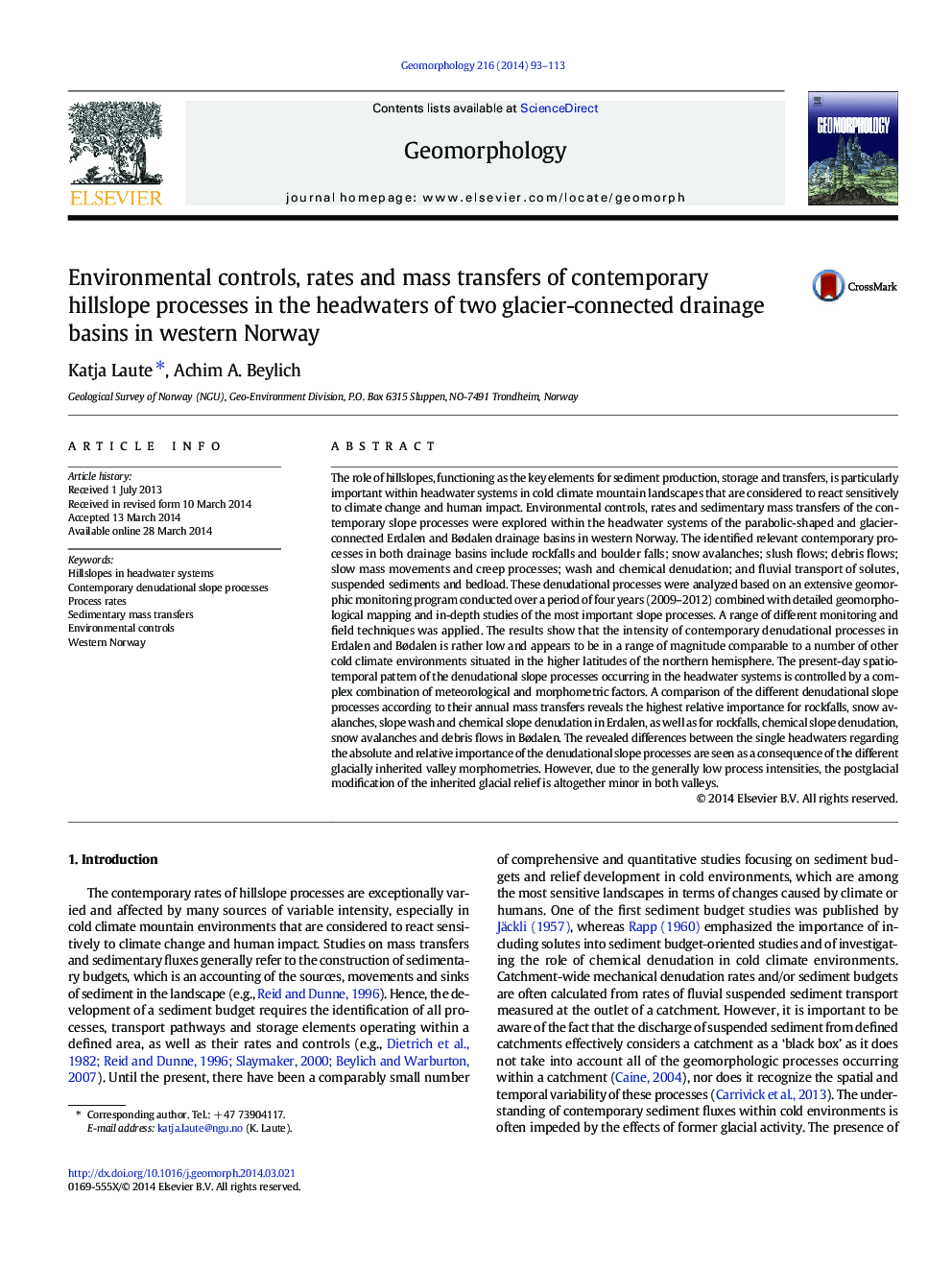| Article ID | Journal | Published Year | Pages | File Type |
|---|---|---|---|---|
| 4684517 | Geomorphology | 2014 | 21 Pages |
•Extensive monitoring program of relevant slope processes conducted over four years•Quantification of rates of recent denudational slope processes in western Norway•Process intensities are rather low with rockfalls being the most important process.•Glacially inherited valley morphometry influences relative importance of processes.
The role of hillslopes, functioning as the key elements for sediment production, storage and transfers, is particularly important within headwater systems in cold climate mountain landscapes that are considered to react sensitively to climate change and human impact. Environmental controls, rates and sedimentary mass transfers of the contemporary slope processes were explored within the headwater systems of the parabolic-shaped and glacier-connected Erdalen and Bødalen drainage basins in western Norway. The identified relevant contemporary processes in both drainage basins include rockfalls and boulder falls; snow avalanches; slush flows; debris flows; slow mass movements and creep processes; wash and chemical denudation; and fluvial transport of solutes, suspended sediments and bedload. These denudational processes were analyzed based on an extensive geomorphic monitoring program conducted over a period of four years (2009–2012) combined with detailed geomorphological mapping and in-depth studies of the most important slope processes. A range of different monitoring and field techniques was applied. The results show that the intensity of contemporary denudational processes in Erdalen and Bødalen is rather low and appears to be in a range of magnitude comparable to a number of other cold climate environments situated in the higher latitudes of the northern hemisphere. The present-day spatio-temporal pattern of the denudational slope processes occurring in the headwater systems is controlled by a complex combination of meteorological and morphometric factors. A comparison of the different denudational slope processes according to their annual mass transfers reveals the highest relative importance for rockfalls, snow avalanches, slope wash and chemical slope denudation in Erdalen, as well as for rockfalls, chemical slope denudation, snow avalanches and debris flows in Bødalen. The revealed differences between the single headwaters regarding the absolute and relative importance of the denudational slope processes are seen as a consequence of the different glacially inherited valley morphometries. However, due to the generally low process intensities, the postglacial modification of the inherited glacial relief is altogether minor in both valleys.
